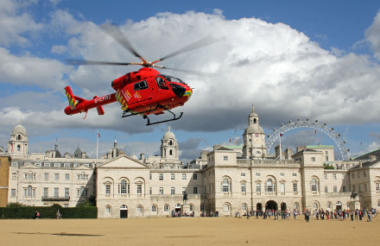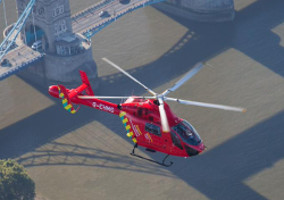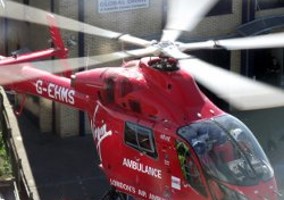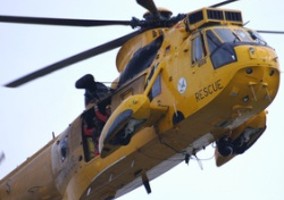A survey by London’s Air Ambulance into awareness of its brand has found that although eight out of ten people have heard of the organisation, two thirds do not believe or aren’t aware it is a charity.
The brand review, which was carried out by nfpSynergy on behalf of London’s Air Ambulance, also showed that a low number of people understand the specific role of the charity.
The survey asked 1,093 people in London, a representative sample of Londoners, about their awareness and understanding of the London’s Air Ambulance brand.
The survey revealed that 63 per cent of people in London do not believe or are not sure if London’s Air Ambulance is a charity, despite 80 per cent of respondents saying they have heard of the service before.
It found that 37 per cent of people know that London’s Air Ambulance is a charity, with other charities operating within emergency infrastructure having considerably higher recognition of their charitable status. The survey found that 53 per cent of people surveyed recognised RNLI as a charity, and 74 per cent recognised British Red Cross as a charity.
London’s Air Ambulance said it believed that this discrepancy may come about because 47 per cent of people believe funding for the charity comes from either the NHS, central government or local government. Whereas, although the charity is supported by doctors and paramedics on paid secondment from Barts Health NHS Trust and the London Ambulance Service, the majority of its income comes from public donations.
The challenge of the new CEO
The charity, which treats on average five critically injured people in London each say, has said that it will be the challenge of its new chief executive, Jonathan Jenkins, to increase understanding of its charitable status amongst the 10 million people living and working within the M25.
Jenkins said: “The results of our brand research confirm what we as an organisation already suspected. In my early days as CEO, I have quickly learned that one of our greatest challenges is spreading the message that London's Air Ambulance is a charity.
"After our involvement in the tragic incidents at Westminster and London Bridge supporters organically took to social media to share that fact. You could see that people were shocked to find out our service relies primarily on donations from the public, and there is clearly a lot of work still to be done to inform people of our charity status.
“Over the past few years our charity has been focused on acquiring our second helicopter and extending our daylight flying hours so we can better serve the people of London. Now that we’ve achieved that goal, our next challenge is about increasing awareness that we are a charity, which will hopefully in turn grow our supporter base.
"Support from local communities is vital as we build that awareness. We are a service funded by the people of London for the people of London, and community spirit is right at the heart of everything we do. I would like to take this opportunity to say a massive thank you to our supporters as we couldn’t help critically injured people in London without you.”
The survey also showed that there was some confusion around the services London’s Air Ambulance provides. When asked to select activities carried out by the charity, respondents mostly chose those associated with ‘transporting patients to hospitals’ as one of its key functions, while 59 per cent selected ‘transporting patients to hospital from hard to access areas’.
The main purpose of London’s Air Ambulance is to deliver a doctor and paramedic team, either by aircraft or rapid response car, to the scene of a critically injured patient to provide treatment only usually found in a hospital emergency department – including open chest surgery, anaesthesia, blood transfusions and advanced pain relief.
It says that the patient will only be transported to hospital by London’s Air Ambulance in 20 per cent of cases attended by helicopter. In the remaining cases, the London’s Air Ambulance medical team will travel by road with the London Ambulance Service to take the patient to hospital, as this is usually the most appropriate method of transporting critically injured patients in London.
Related articles












